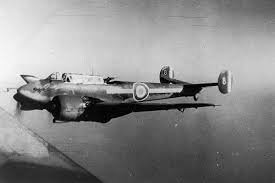- Joined
- 11 March 2012
- Messages
- 3,247
- Reaction score
- 3,177
What is the worst example of 'design by committee' where one designer had no clue about what his fellows were designing until all the different parts arrived at final assembly?
I nominate the Blackburn Roc naval, turret-fighter.
Its Townsend ring cowling looks terribly "1930s."
That circular fuselage might have looked good on the drawing-board, but it is poorly mated to other components.
A slab-sided fairing tries to smooth the wing root junction.
Why does the landing gear retract outboard? Were they stolen from a TBM Avenger? Why do they ruin the chances of installing guns in the wings??????
Was the tail wheel stolen from a Hawker Hurricane?
Where id they find that superbly ugly vertical windshield?
Which bomber is missing its mid-upper turret?
Are the turret fairings made from old shipping crates?
Were the tail surfaces stolen from a Vought F4U Corsair?
I nominate the Blackburn Roc naval, turret-fighter.
Its Townsend ring cowling looks terribly "1930s."
That circular fuselage might have looked good on the drawing-board, but it is poorly mated to other components.
A slab-sided fairing tries to smooth the wing root junction.
Why does the landing gear retract outboard? Were they stolen from a TBM Avenger? Why do they ruin the chances of installing guns in the wings??????
Was the tail wheel stolen from a Hawker Hurricane?
Where id they find that superbly ugly vertical windshield?
Which bomber is missing its mid-upper turret?
Are the turret fairings made from old shipping crates?
Were the tail surfaces stolen from a Vought F4U Corsair?






















